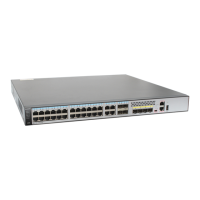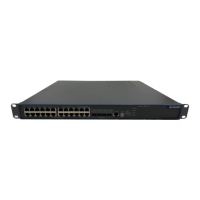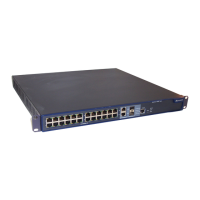NOTE
The differences between traps and informs are as follows:
l The traps sent by the managed device do not need to be acknowledged by the NM station.
l The informs sent by the managed device need to be acknowledged by the NM station. If no
acknowledgement message from the NM station is received within a specified time period, the
managed device will resend the inform until the number of retransmissions reaches the maximum.
When the managed device sends an inform, it records the inform in the log. If the NM station and
link between the NM station and managed device recovers from a fault, the NM station can still
learn the inform sent during the fault occurrence and rectification.
In this regard, informs are more reliable than traps, but the device may need to buffer a lot of informs
because of the inform retransmission mechanism and this may consume many memory resources.
If the network is stable, using traps is recommended. If the network is unstable and the device's memory
capacity is sufficient, using informs is recommended.
– To configure a destination IP address for the traps and error codes sent from the device,
run:
snmp-agent target-host trap address udp-domain ip-address [ udp-port port-
number ] [ public-net | vpn-instance vpn-instance-name ] params securityname
security-string [ v2c ] [ private-netmanager | ext-vb ]
*
– To configure a destination IP address for the informs and error codes sent from the device,
run:
snmp-agent target-host inform address udp-domain ip-address [ udp-port port-
number ] [ vpn-instance vpn-instance-name ] params securityname security-
string v2c [ ext-vb ]
The descriptions of the command parameters are as follows:
l The default destination UDP port number is 162. In some special cases (for example, port
mirroring is configured to prevent a well-known port from being attacked), the parameter
udp-port can be used to specify a non-well-known UDP port number. This ensures normal
communication between the NM station and managed device.
l If the alarms sent from the managed device to the NM station need to be transmitted over a
public network, the parameter public-net needs to be configured. If the alarms sent from the
managed device to the NM station need to be transmitted over a private network, the
parameter vpn-instance vpn-instance-name needs to be used to specify a VPN that will take
over the sending task.
l The parameter securityname identifies the alarm sender, which will help you learn the alarm
source.
l If the NM station and managed device are both Huawei products, the parameter private-
netmanager can be configured to add more information to alarms, such as the alarm type,
alarm sequence number, and alarm sending time. The information will help you locate and
rectify faults more quickly.
l The ext-vb parameter sets extended bound variables for traps sent to the target host. By
default, the traps sent to the target host do not carry extended bound variables.
NOTE
An IPv6 network supports only traps, not informs.
Step 6 (Optional) Run:
snmp-agent sys-info { contact contact | location location }
The equipment administrator's contact information or location is configured.
This step is needed if the NM station administrator needs to know equipment administrators'
contact information and locations when the NM station manages many devices. This will allow
Quidway S5700 Series Ethernet Switches
Configuration Guide - Network Management 1 SNMP Configuration
Issue 01 (2011-10-26) Huawei Proprietary and Confidential
Copyright © Huawei Technologies Co., Ltd.
18

